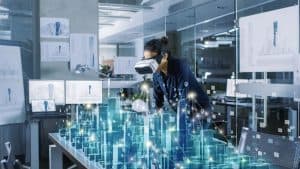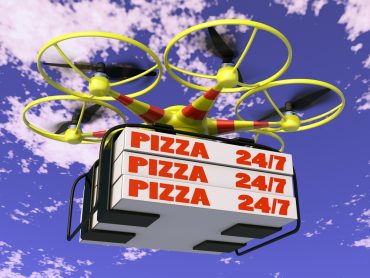
IoT-enhanced AR could be instrumental in helping people collaborate – whether they work in factories or other installations.
To become a well-rounded manufacturing operation with a full view of a product’s lifecycle, augmented reality (AR) has something to offer.
That’s the word from Jim Heppelmann, president CEO of PTC. In a recent interview with CXOTalk’s Michael Krigsman. The journey to IoT-enhanced AR began with “the idea of lifecycle management because IoT allowed us to close the loop during the fielded part of the lifecycle of a product,” Heppelmann states. Bringing in data from the field provides a “3D understanding” of product usage and performance – “a perfect application for AR,” he points out.
See also: Will Smart Factories Remove the Need for Humans?
The intersection between developing IoT networks and AR is significant, Heppelmann continues, noting that “AR is IoT for people.” If IoT “is about connecting things to the Internet so that we can monitor, control, and optimize those things, then AR is about connecting people to the Internet so that we can monitor, control, and optimize the work of people.”
IoT-enhanced AR could be instrumental in helping people collaborate — whether they work in factories or other installations. “For example, IoT might tell me that a machine is going to have a problem and I can use that information to direct a worker where to go and what to do when they get there using AR,” Heppelmann explains.
The good news is that no special headsets or smart glasses are required to take full advantage of AR. While they could enhance the experience, a smartphone may be all that’s necessary, he adds. “We can all try it out and see its power and see what it means using the phone we have in our pocket or our purse. I think we’re at that tipping point where AR is very practical and everybody is seeing what it is and how you might apply it in business and then shocked at the value it can create.”
Here are just a few examples of what Heppelmann describes examples of IoT-enhanced AR in action:
Product design: AR can be deployed to combine physical and digital things together in a design.
Training and work instructions: “Training today, for frontline workers, is really in advance and just in case,” says Heppelmann. AR provides “an opportunity to turn that on its ear and make it in the moment, just in time, and just as needed, so there is a real opportunity here in every part of an enterprise to reconsider how we pass digital information on to people and make those people much more productive, much more accurate in the work that they do.”
Marketing and sales: Hologram catalogs enable customers “to see a product, maybe even configure, and then see a product as a hologram. Salespeople love selling products that have accompanying AR experiences because it’s a big differentiator for the product.”
Maintenance service: If a customer has an issue, the company “can step them through what they would need to do to see if they could fix the problem before we dispatch a truck and a service technician. We could actually jump on a video call with an AR overlay and coach them through what we think they ought to do in the moment.” This can apply to internal corporate issues as well.
Robotics: “If I had a VR model of a factory, I could program where I want a robot to drive that’s carrying the parts around through VR. I could program points on the floor that I want the robot to follow.”
To start with IoT-driven AR, look at potential use cases across the enterprise, Heppelmann advises. ” Where could you make workers, particularly frontline workers, much more productive and how would you apply AR to that?”






























